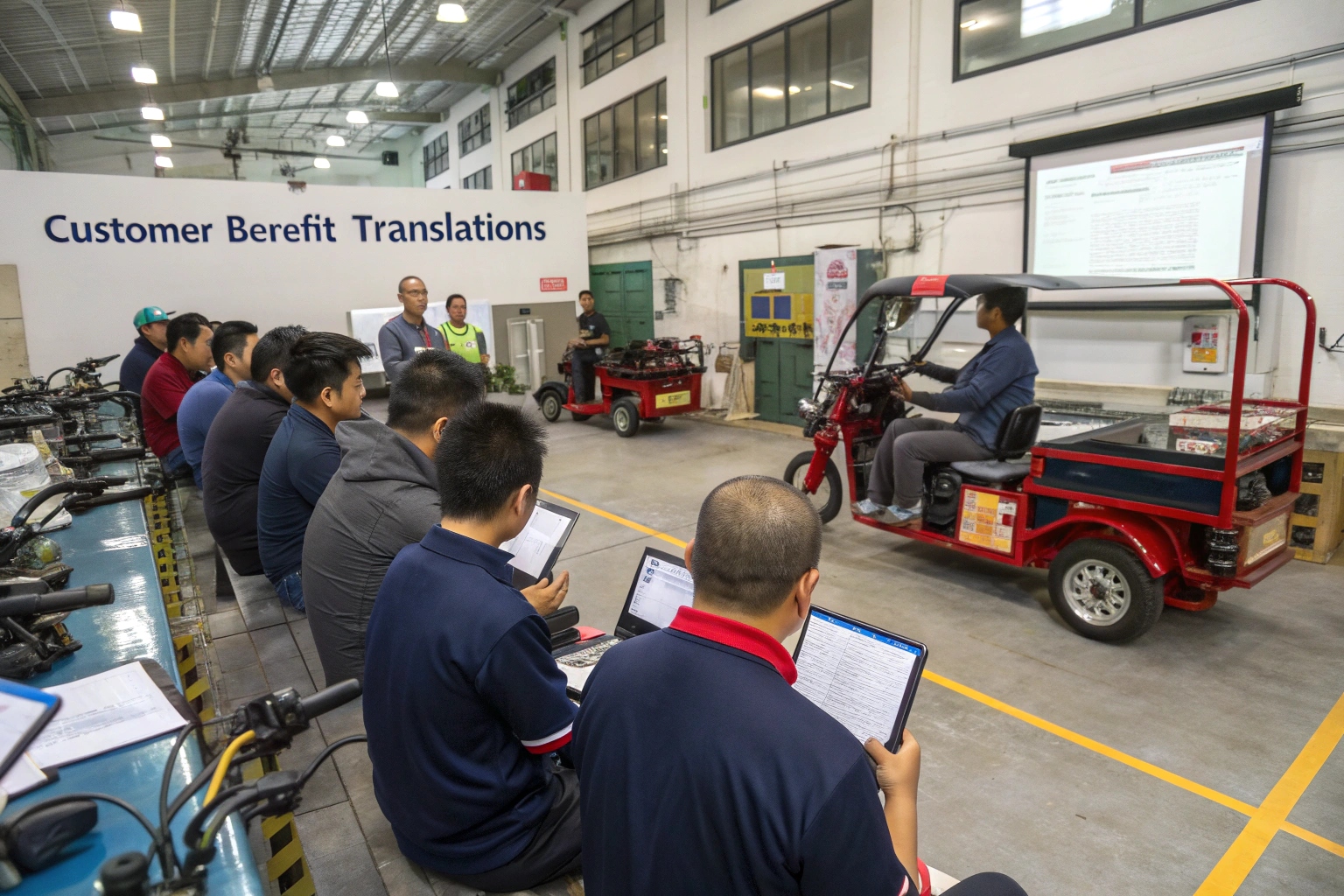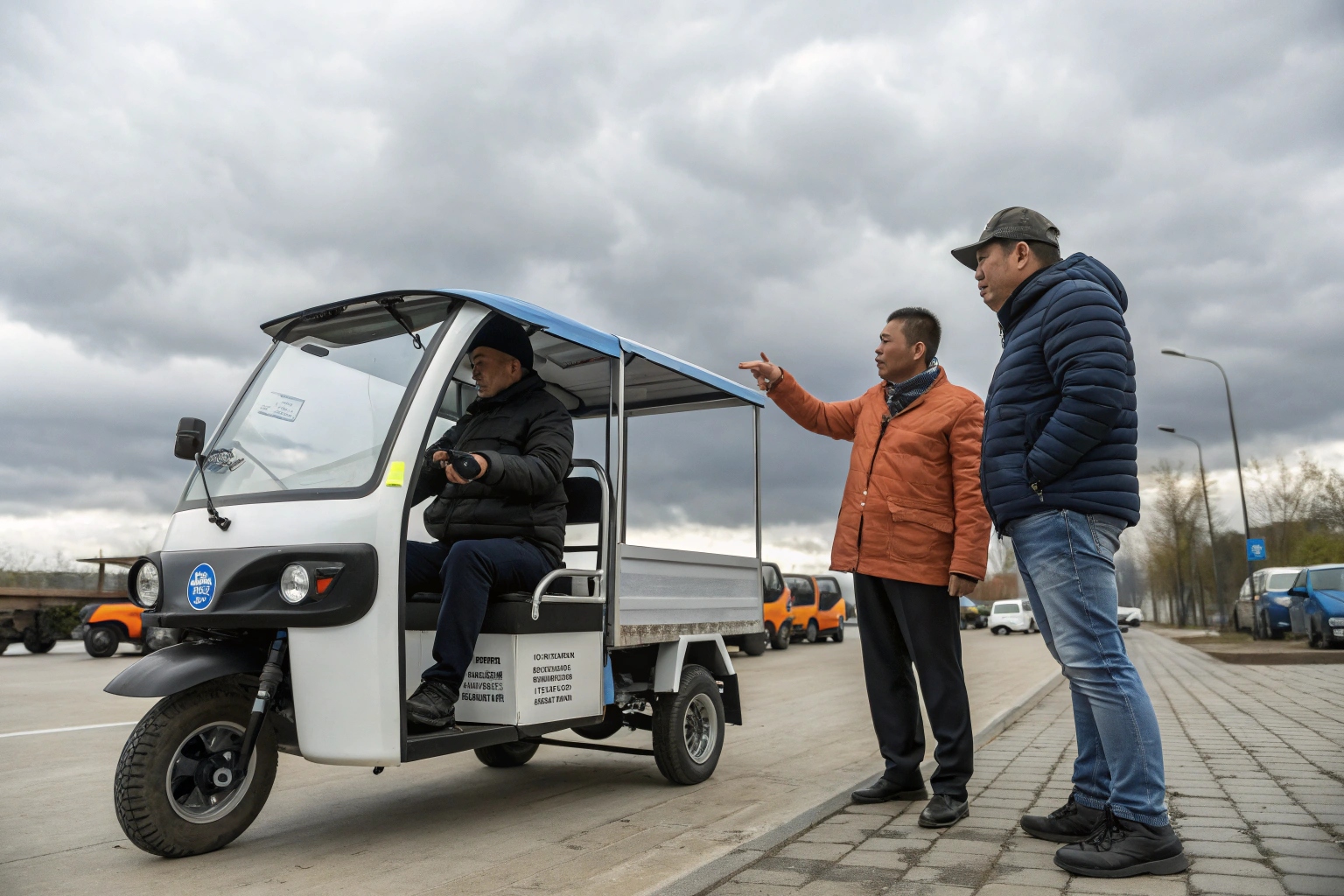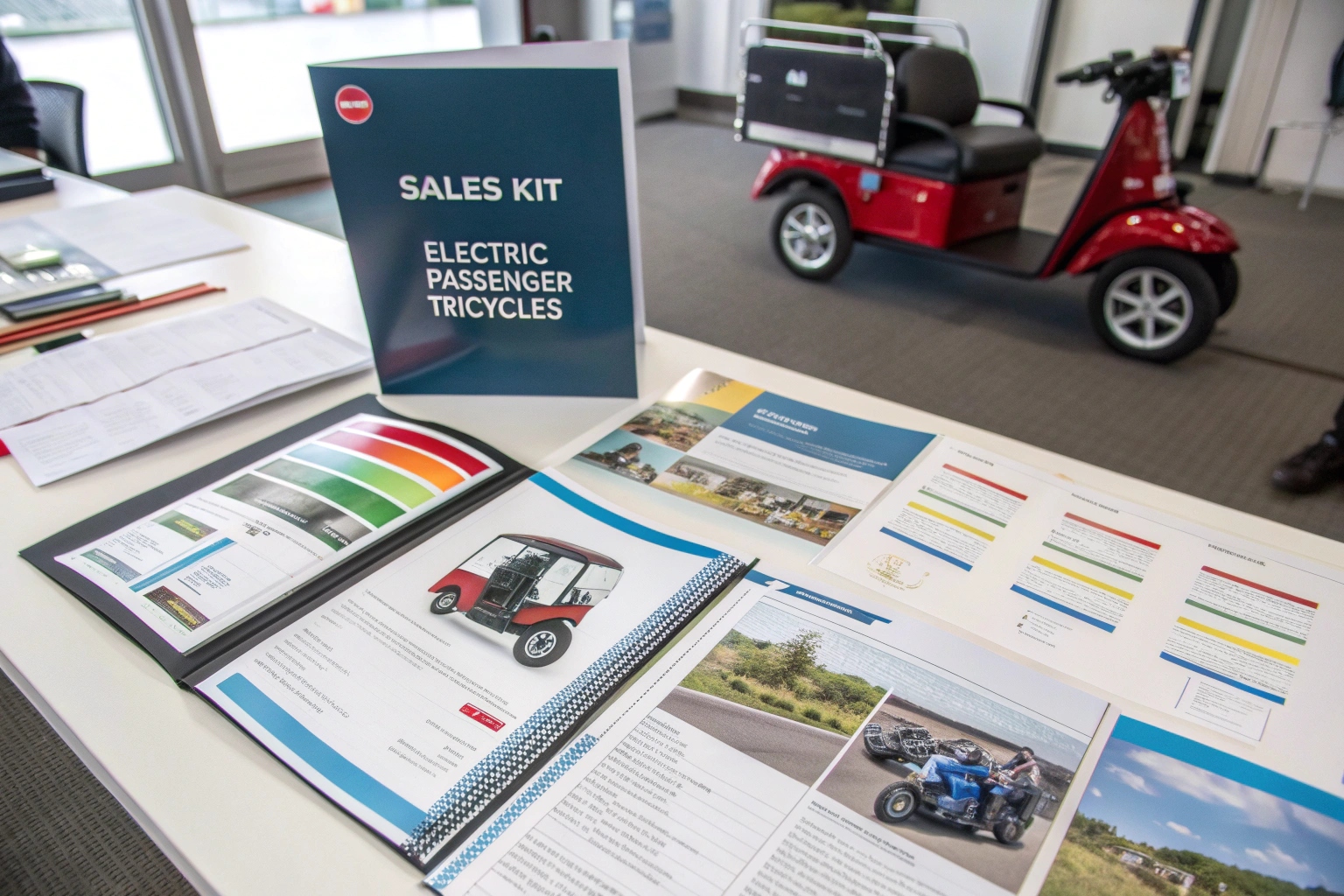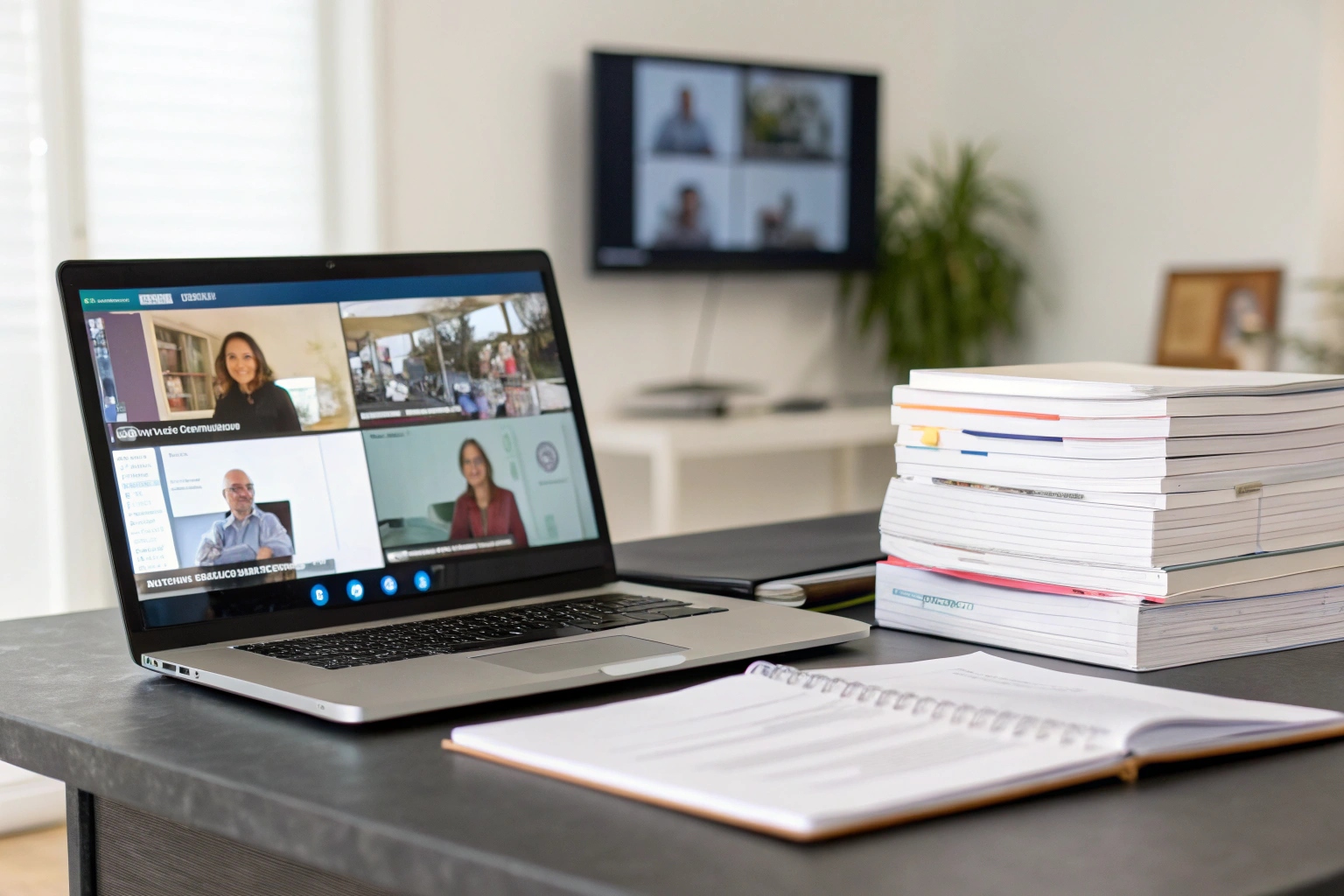You've successfully imported a container of electric tricycles. But now they are sitting in your dealer's showroom, and the sales team looks lost, unable to answer customer questions confidently.
The best way to train dealers is through a structured program that focuses on practical technical knowledge, translating features into customer benefits, providing ongoing sales support, and using a flexible mix of remote and self-guided training methods.

Bilang a Tagagawa, I've learned that our job isn't over when the container leaves the port. Our success is tied directly to our dealers' success. A poorly trained dealer can't move inventory, which hurts both of us. Over the years, we've refined our training process to be simple, practical, and effective. It’s not about making them engineers; it’s about making them confident problem-solvers for their local customers. This guide shares the exact methods we use to empower our partners around the world.
What Technical Knowledge Should Dealers Master to Sell Electric Tricycles?
Your dealers are overwhelmed by technical specifications. They either can't remember the details or bore customers by listing numbers that don't mean anything to the average buyer.
Dealers should master only the key technical points that matter to customers: battery range, motor power for local terrain, and load capacity. They don't need to be experts, but they must know the primary selling point for each model.

The goal is not to memorize the entire spec sheet. The goal is to connect the right spec to the right customer need. This is where your insight is critical—the training must be tailored to the product line. For a cargo tricycle destined for a farmer, the most important number is the load capacity. Can it carry 500kg of produce? That's the question they need to answer. For a passenger tuk-tuk, the conversation shifts to motor power and suspension. Can it climb the city's hills smoothly with three people on board? For a delivery tricycle, the key metric is battery range and cost-efficiency. Can it complete a full day's routes on one charge, saving the business money on fuel? We train dealers to identify the customer's main goal first, then highlight the one or two technical specs that prove our vehicle is the solution.
| Tricycle Type | Most Important Spec to Know | Why It's the Key Selling Point |
|---|---|---|
| Cargo Tricycle | Load Capacity (kg) & Frame Gauge | Answers: "How much can it carry?" for farmers/workers. |
| Tricycle ng pasahero | Motor Power (W) & Comfort Features | Answers: "Is the ride smooth and strong?" for taxi use. |
| Paghahatid ng tricycle | Battery Range (km) & Cargo Volume | Answers: "How much can I deliver and how far?" for logistics. |
How Can You Train Dealers to Communicate Features as Benefits?
A dealer tells a customer, "This tricycle has a 1000-watt motor." The customer just stares blankly. The sale is lost because the dealer sold a feature, not a solution.
Train dealers using a simple "Feature-Advantage-Benefit" formula. This forces them to connect every technical feature to a real-world advantage and, ultimately, a tangible benefit for the customer's life or business.

This is the most important sales skill we teach. A feature is what something is. A benefit is what it does for the customer. We provide our dealers with simple scripts and role-playing exercises to master this. For example, instead of just saying "enclosed cabin," they learn to say: "This has a fully enclosed cabin (feature), which means you're protected from the sun and rain (advantage). For you, this means you can work comfortably every day of the year and not lose income because of bad weather (benefit)." This simple shift in communication is incredibly powerful. It changes the conversation from a list of parts to a discussion about how the vehicle will improve the customer's business, make them more money, or make their work life easier. This is how you sell value, not just a machine.
What Practical Support Do Dealers Need to Sell Electric Tricycles?
Knowledge is not enough. If your dealers don't have professional sales tools, they will look unprepared and lose credibility with customers who are ready to make a purchase.
Dealers need a complete sales kit. This includes high-quality marketing materials like brochures and videos, clear comparison charts against competitors, and a detailed FAQ sheet to handle common objections and questions confidently.

Think of it as equipping a soldier for battle. You wouldn't send them out with just a uniform. We provide our dealers with a digital "Dealer Success Pack." This contains everything they need to look professional and close deals. It starts with high-resolution photos and videos they can use on their social media and in local ads. We then provide customizable brochures and spec sheets where they can easily add their own logo and contact information. One of the most effective tools we give them is a competitor comparison chart. We help them map our model's key benefits against other popular local options. Finally, we compile an FAQ document based on questions from dealers worldwide. It gives them ready-made, proven answers for questions like "Why is lithium better?" or "What happens if a part breaks?" This practical support makes them feel like a true extension of our factory.
Should You Offer In-Person, Remote, or Self-Guided Dealer Training?
You want to provide detailed training, but your dealers are thousands of miles away. In-person training is too expensive and time-consuming, but you worry remote training won't be effective.
A blended training model is the most effective and scalable approach. Use self-guided materials like videos and PDFs for foundational knowledge, and supplement them with live remote Q&A sessions to address specific questions.

There is no single best method for every situation; the key is to be flexible. We use a blended strategy that respects our dealers' time and our budget. First, we have a library of self-guided training videos and manuals. A new salesperson in Peru can watch these anytime to learn the basics of our models. This is the foundation. Second, we schedule live remote group training sessions via Zoom or Teams every quarter. This is not for lecturing; it's for interaction. We answer questions, discuss new market trends, and share success stories from other dealers. For our largest, most strategic partners, we might invest in an in-person visit once a year to help them launch a new model or train a large new team. This integrated approach gives us the best of all worlds: the scalability of self-guided content, the engagement of live sessions, and the impact of in-person training when it matters most.
Konklusyon
Training your dealers is an ongoing investment in your own brand. By providing them with targeted knowledge, practical sales tools, and flexible support, you empower them to become confident, successful partners.

